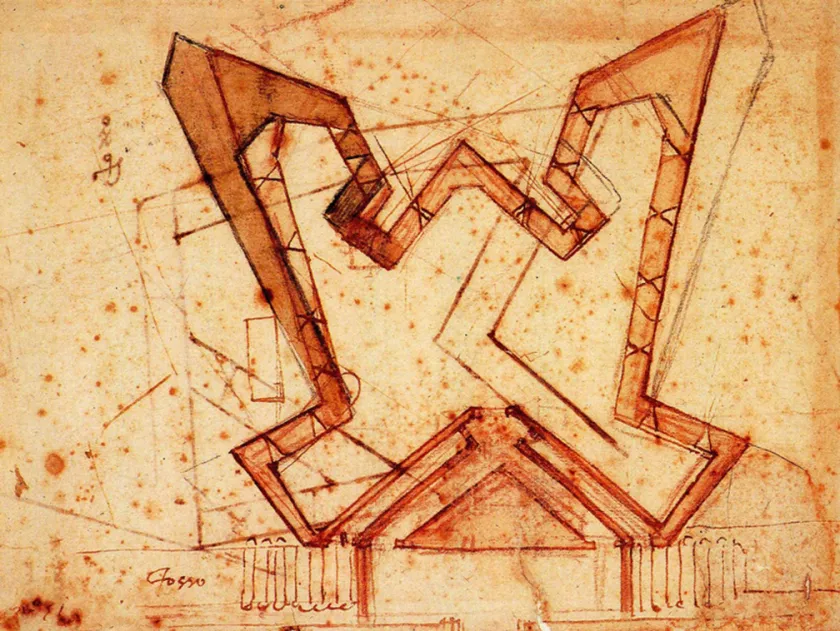
"Giv­en those begin­nings, it would have been prac­ti­cal­ly impos­si­ble for him to avoid entan­gle­ment with the House of Medici, the bank­ing fam­i­ly and polit­i­cal dynasty that ruled over Flo­rence for the bet­ter part of three cen­turies. By the time of Michelan­gelo's birth, in 1475, the Medici had been in pow­er for four decades. At the age of four­teen, he was tak­en in by Loren­zo de' Medici, known as "il Mag­nifi­co," in whose house­hold he received artis­tic train­ing as well as philo­soph­i­cal knowl­edge and polit­i­cal con­nec­tions."
"When the fam­i­ly was expelled from Flo­rence two years lat­er, Michelan­ge­lo took his leave as well, begin­ning the peri­od of his career in which he would sculpt both the Pietà and the . Only in 1512 (after var­i­ous trou­bles in Flo­rence that includ­ed the four-year theoc­ra­cy of Savonaro­la) were the Medici restored to pow­er, but they also had the papa­cy: the Medici popes Leo X and Clement VII com­mis&shioned a great deal of work from Michelan­ge­lo, though he sel­dom saw eye-to-eye with those par­tic­u­lar patrons."
Michelangelo was born in Florence into circumstances that made entanglement with the Medici inevitable. Lorenzo de' Medici took him into his household at age fourteen, providing artistic training, philosophical knowledge, and political connections. Lorenzo's death and the Medici expulsion led Michelangelo to leave Florence and begin a period that produced works such as the Pietà. The Medici were restored in 1512 and supplied the papacy; Medici popes Leo X and Clement VII commissioned extensive work from Michelangelo, though he often clashed with those patrons. During the late 1520s rebellion, Michelangelo sided with the republicans and helped design city fortifications.
Read at Open Culture
Unable to calculate read time
Collection
[
|
...
]